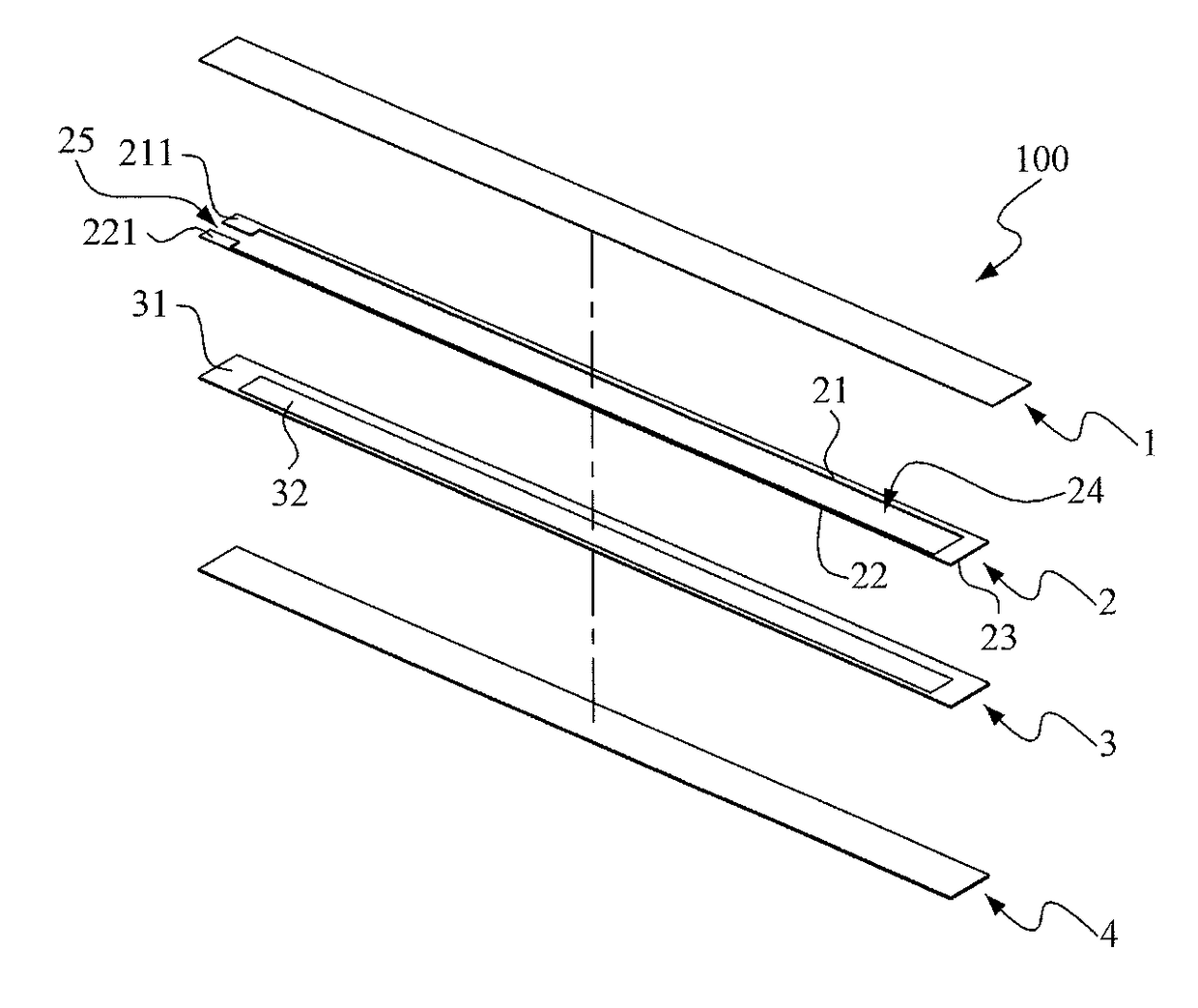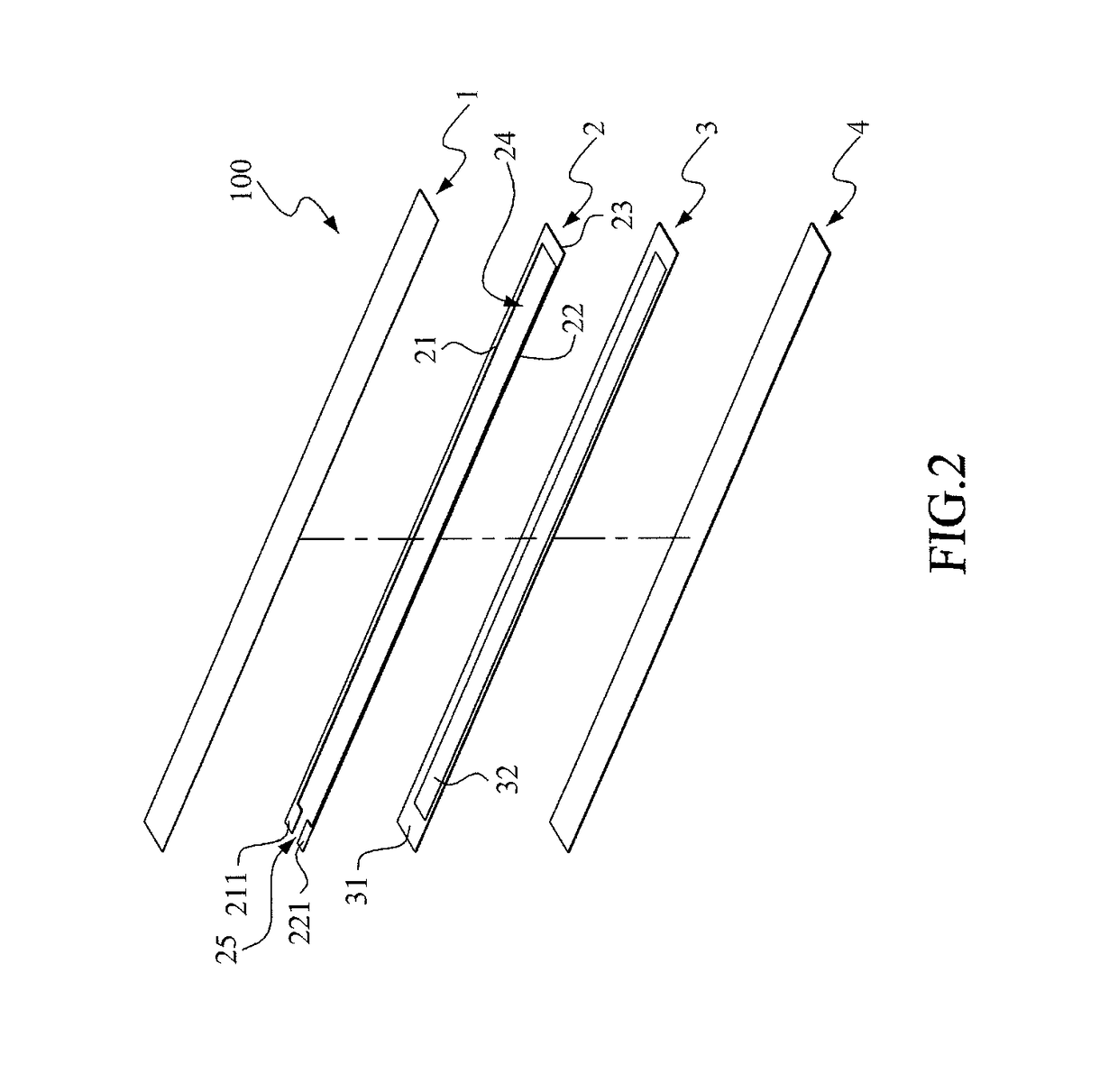Bend sensor
a sensor and bend technology, applied in the direction of converting the output of the sensor electrically/magnetically, printing circuit aspects, electrical/magnetic measuring arrangements, etc., can solve the problem that the detection of the bend sensor is strictly limited to specific bending patterns, and achieve the effect of reducing the cross-sectional area
- Summary
- Abstract
- Description
- Claims
- Application Information
AI Technical Summary
Benefits of technology
Problems solved by technology
Method used
Image
Examples
Embodiment Construction
[0037]The invention disclosed herein is directed to a bend sensor. In the following description, numerous details are set forth in order to provide a thorough understanding of the present invention. It will be appreciated by one skilled in the art that variations of these specific details are possible while still achieving the results of the present invention. In other instance, well-known components are not described in detail in order not to unnecessarily obscure the present invention.
[0038]Refer now to FIG. 2 through FIG. 3A; where FIG. 2 is a schematically exploded view of a preferred embodiment of the bend sensor in accordance with the present invention, FIG. 3 is another view of FIG. 2, and FIG. 3A is an enlarged view of area A of FIG. 3. As shown, the bend sensor 100 includes a flexible circuit substrate 1, an insulation pad 2, a flexible conductive substrate 3 and a reinforcing plate 4.
[0039]The flexible circuit substrate 1 includes an insulating body 11, a first circuit 12 ...
PUM
 Login to View More
Login to View More Abstract
Description
Claims
Application Information
 Login to View More
Login to View More - R&D
- Intellectual Property
- Life Sciences
- Materials
- Tech Scout
- Unparalleled Data Quality
- Higher Quality Content
- 60% Fewer Hallucinations
Browse by: Latest US Patents, China's latest patents, Technical Efficacy Thesaurus, Application Domain, Technology Topic, Popular Technical Reports.
© 2025 PatSnap. All rights reserved.Legal|Privacy policy|Modern Slavery Act Transparency Statement|Sitemap|About US| Contact US: help@patsnap.com



